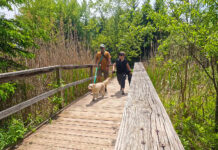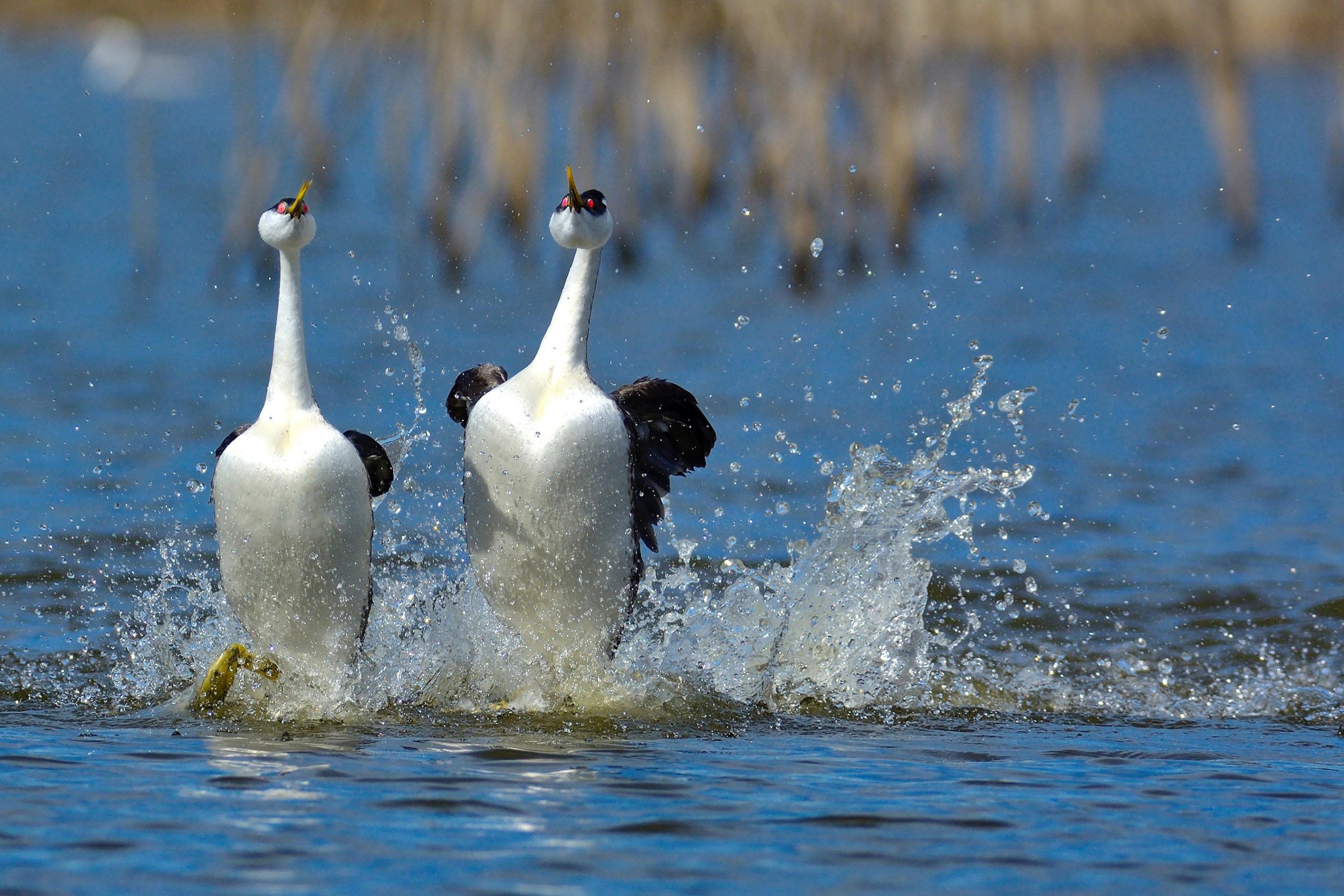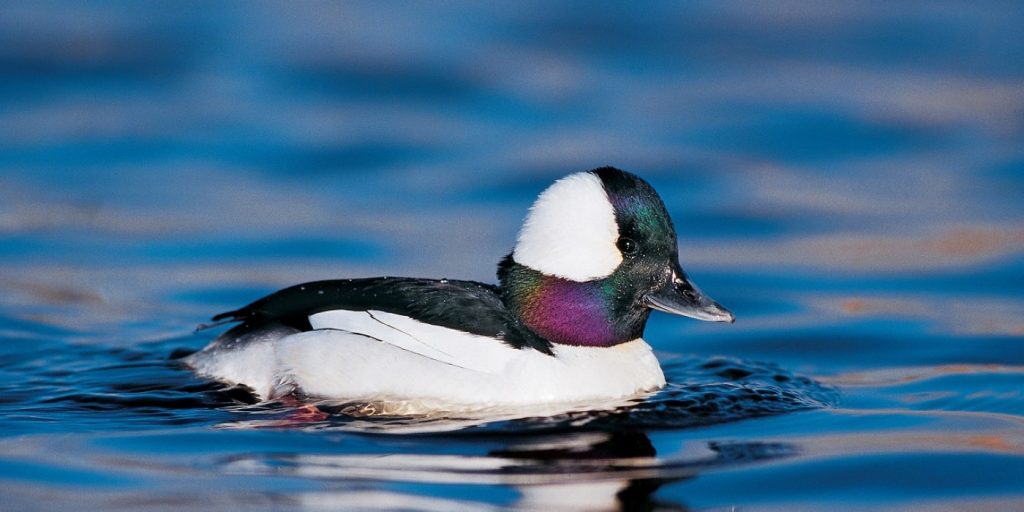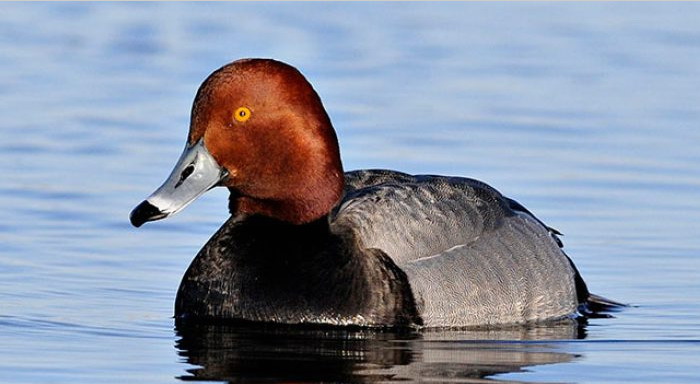Clark’s grebe pair (Western Grebe) in courtship ritual.
Ducks Unlimited Canada presents:
Secrets to successful dating, written by and for North America’s drakes…
Spring waterfowl migration is now underway in Canada, with most ducks are already paired up by the time they arrive at their Canadian breeding and nesting grounds.
Eight duck drakes share the curious courtship antics they use to get the girl (hen).

Common goldeneye drake courting. Common goldeneye: Snap your head back and point your bill at the sky—declaring your love for all the world to hear with your shrill cries. Then splash water high in the air with your feet, in celebration of your heaven-sent hen.
- Bufflehead: Show her you’re more than a “butterball” with an impressive athletic display. First, a few aerial passes. Then, ski up to her across the water. Finally, bob your head with vigour. And if competing drakes ski in, charge at them underwater and smack them with your wings.
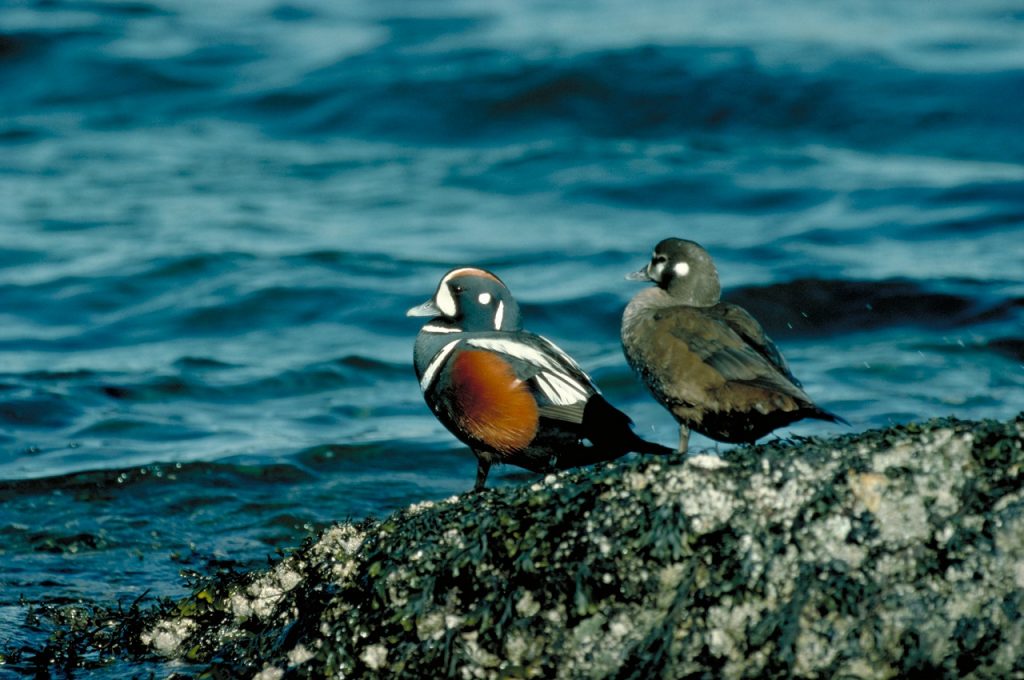
Harlequin pair standing on rocks. Harlequin duck: Fellas—let her know you’re not looking for a fly-by-night affair. Harlequin is ready to settle down, long-term. When you find “the one,” you’ll both be scooting across the water to chase away other ducks.
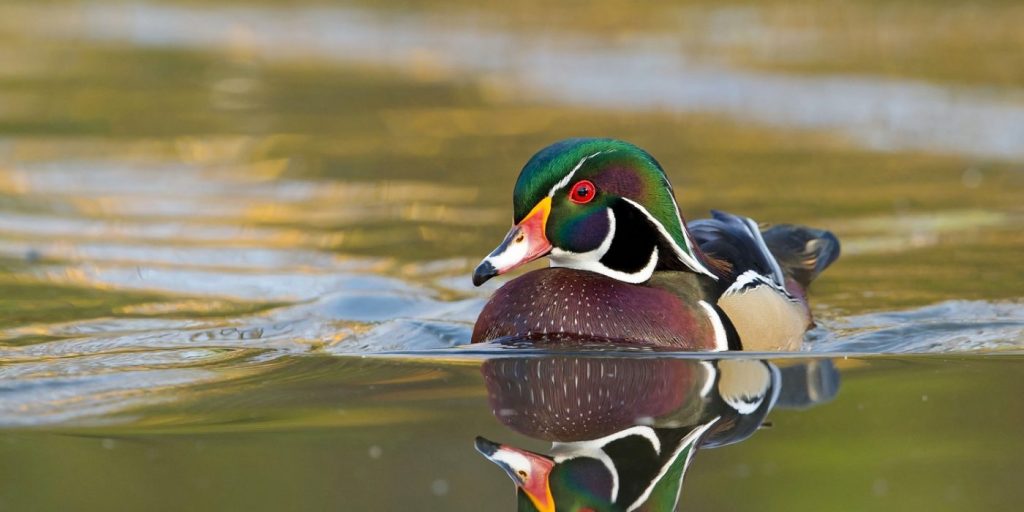
Wood duck Wood duck: Glide past her as you stick your wings and butt in the air. Close the deal with a little head-tilting. Sometimes that’s all you need when you look this good.
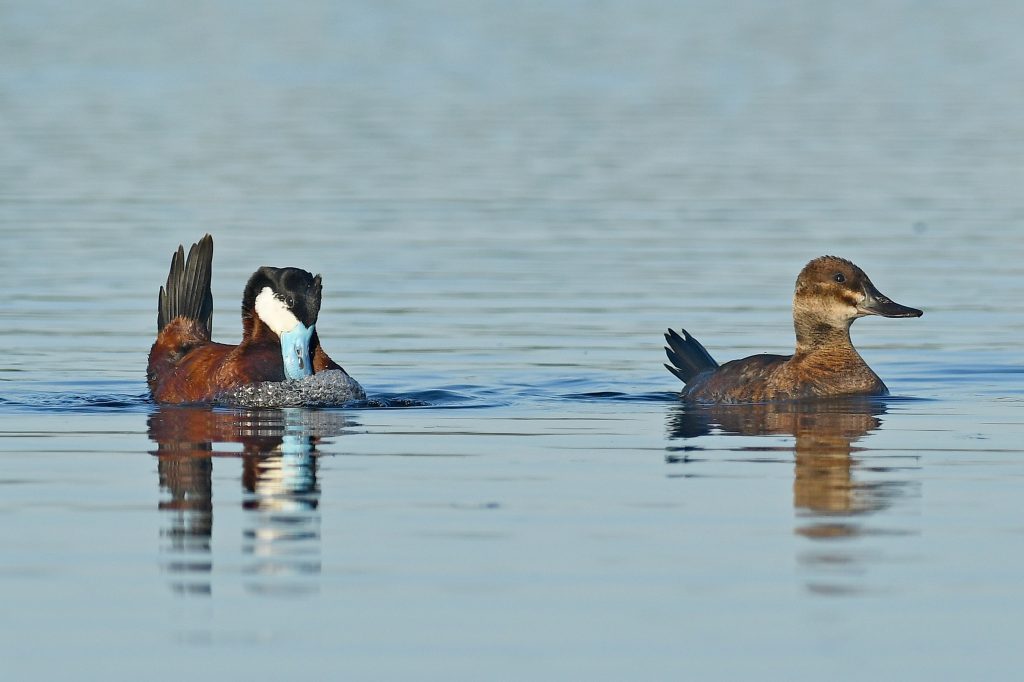
Ruddy duck pair, courting. Ruddy duck: Fight the urge to be shy, guys. Express your feelings with some elaborate bubble-making, for all the hens in sight. Use your bill to beat them out of your neck—then close your display with a confident belch.
- Redhead: Meow at her. ‘Nuff said.
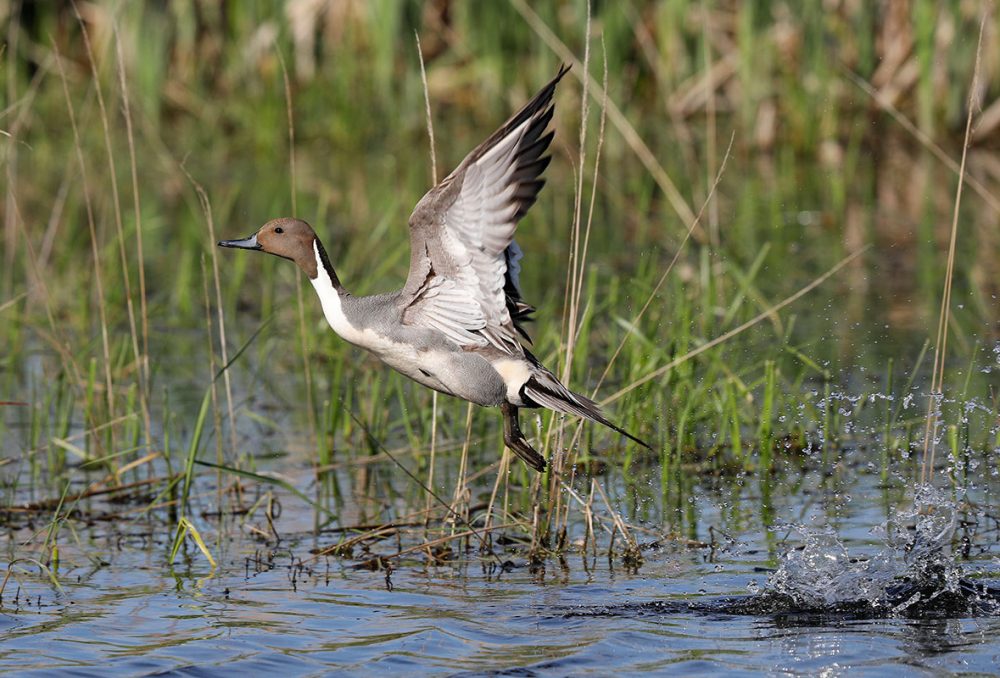
Northern Pintail in flight Northern pintail: Don’t be like woody—play it cool. Try preening, somewhere she can see you…just enough to let her see that green speculum feather bling. If she’s not looking, give a little whistle and chin-tuck. If that still doesn’t get her motor clucking, you might be too subtle. Dial it up a tick by touching your head to your butt or chasing her around while she’s flying.
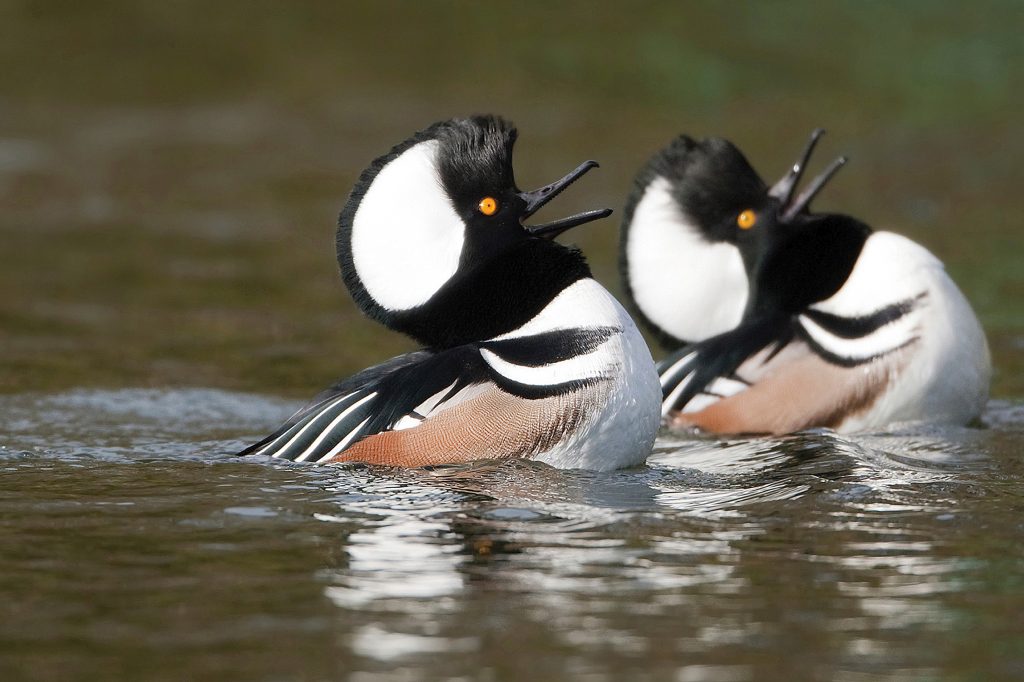
Two hooded merganser drakes in courtship. Hooded merganser: The trick is to get noticed without coming on too strong (looking at you, common goldeneye). Raise your crest and shake your head until you have her attention, then bump your back with the backside of your head. Finally, croak like a frog to let her know you’re down.
Download, print, view and share DUC’s Secrets to successful dating, written by and for North America’s drakes infographic available on the Ducks Unlimited website.
Family matters
After the courtship is over, the business of raising a brood begins. Here’s some interesting facts about this important stage in the waterfowl life cycle.
- Canada geese are family oriented and will mate for life.
- Some ducks, like the redhead, will lay their eggs in another duck’s nest and leave the brooding to the other species. This act is termed “nest parasitism.”
- Mallard hens will re-nest up to six times if a nest is destroyed.
- Most ducklings leave the nest within 24 hours of hatching.
- Hooded mergansers nest in tree cavities as high as 50 feet above the ground – the ducklings will tumble to the ground unharmed when leaving the nest.
Spot a duck while on your road travels this spring? Don’t keep it to yourself – quack about it! Share your bird sightings on our Migration Tracker project on iNaturalist! Learn more at: ducks.ca/migration-tracker You’ll be helping us celebrate nature’s amazing migration stories and raise awareness for the habitat conservation our migratory species rely on.










